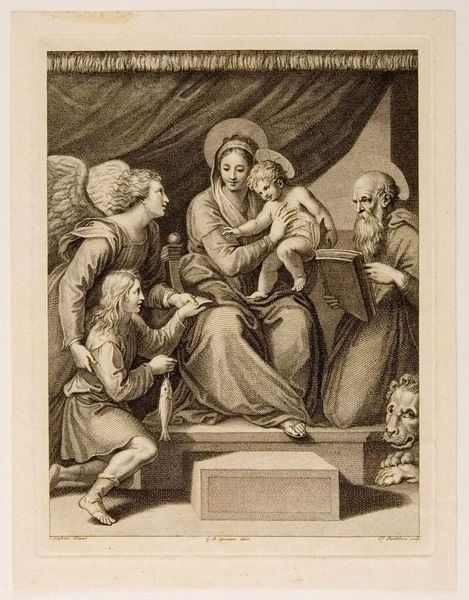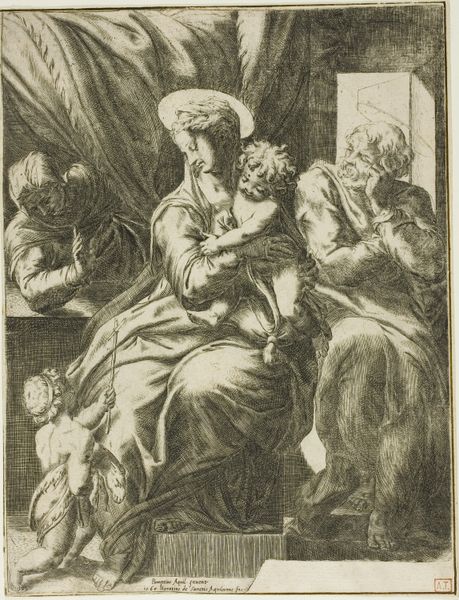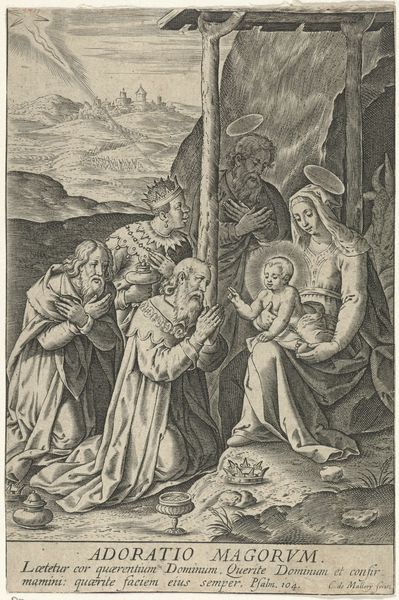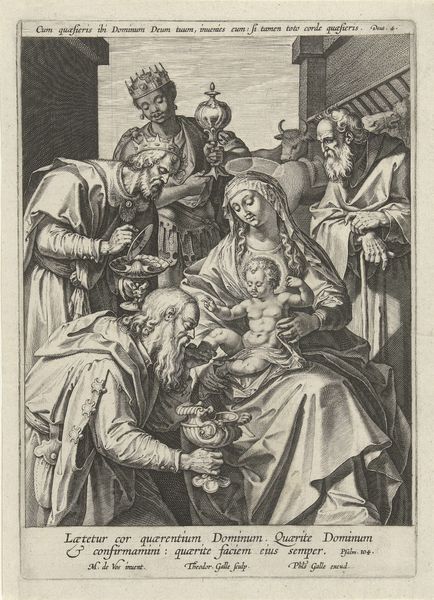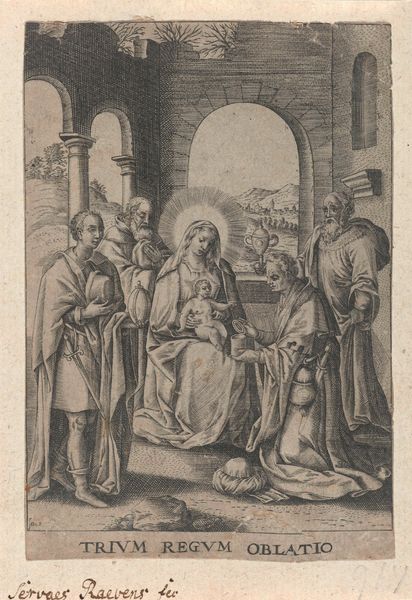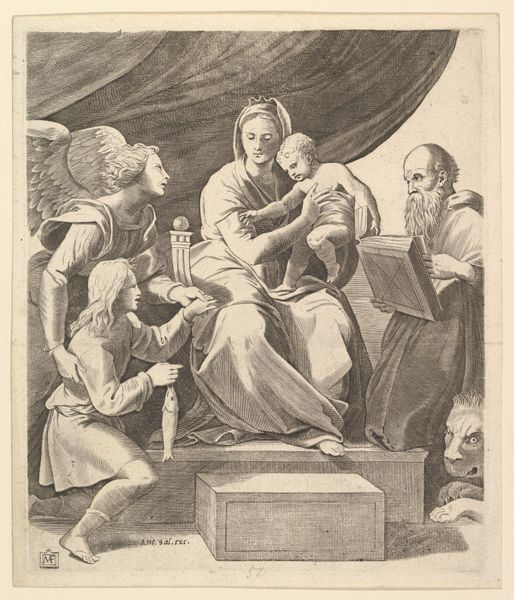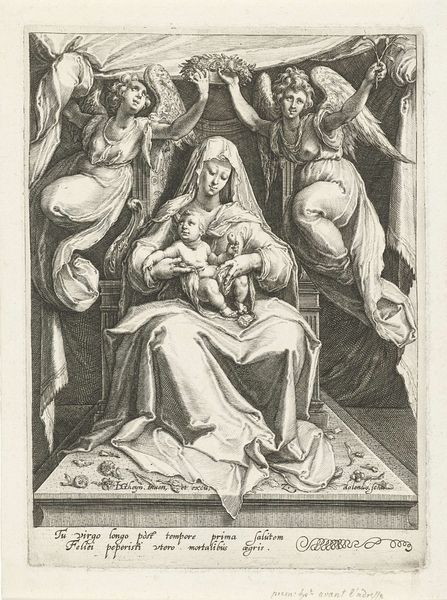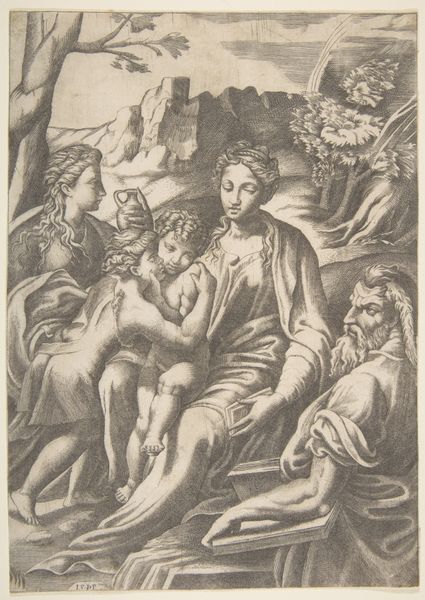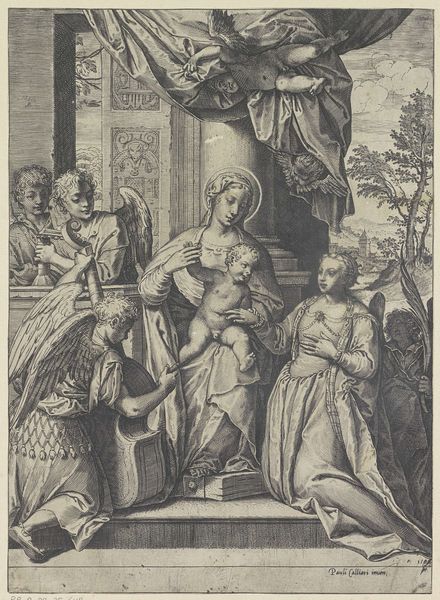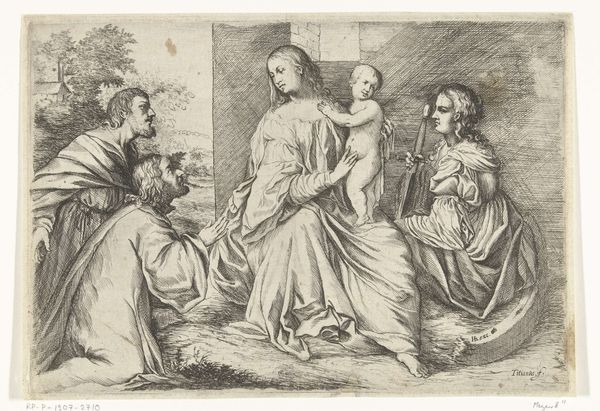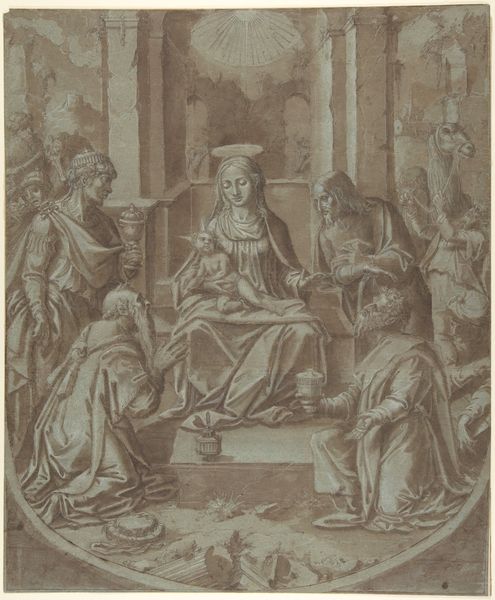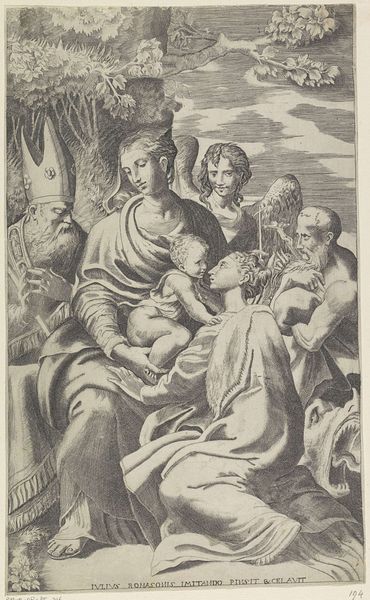
Maria met kind geflankeerd door aartsengel Michaël met Tobias met vis en heilige Hieronymus 1520 - 1550
0:00
0:00
anonymous
Rijksmuseum
print, engraving
# print
#
figuration
#
line
#
history-painting
#
italian-renaissance
#
engraving
Dimensions: height 294 mm, width 210 mm
Copyright: Rijks Museum: Open Domain
Curator: Before us, we have an engraving created sometime between 1520 and 1550 by an anonymous artist: Maria with Child Flanked by Archangel Michael with Tobias holding a Fish, and Saint Jerome. Editor: It’s intense! Everyone seems so serious, almost grim, yet there’s a tenderness in the way Mary holds the child. I’m immediately struck by how skillfully this anonymous artist creates light and shadow with simple lines. Curator: Precisely. Observe the strategic deployment of hatching and cross-hatching, delineating the contours of the figures, the drapery's complex folds, and their placement within the picture plane, achieving a three-dimensional verisimilitude. Notice also how line thickness and density guide the viewer's eye. Editor: The textures are pretty incredible—angel’s feathery wings, the soft skin of baby Jesus. But what’s with that fish? Curator: That’s Tobias, accompanied by the archangel Michael, and he is indeed holding a fish. This is an important motif representing the healing power found in the Book of Tobit. Saint Jerome, identified by the lion, translated the Bible into Latin. This positions Mary and Jesus as figures central to salvation history. Editor: So it’s a sort of...spiritual family portrait? Curator: One could interpret it in those terms. I think of it as more an elaborate exercise in theological discourse. Note how the Renaissance emphasis on idealized forms merges here with intricate symbolic messaging. Editor: Still, there is something endearing about how homely the infant Jesus is. Like any baby! It makes these larger ideas more grounded. Curator: An astute observation. This contrast exemplifies how Renaissance artists could imbue classical ideals with a more relatable humanity. It mirrors the humanist leanings influencing broader societal values. Editor: Looking closely at it, it gives you this slightly weird sensation, knowing a random person printed this using their hands. Curator: A fine print that indeed allows us intimate access to 16th century cultural values. Its formal attributes serve didactic functions within that paradigm. Editor: So well put! It leaves one appreciating this detailed rendering of complex symbolism on a more deeply philosophical level, even when just drawn to its striking figures.
Comments
No comments
Be the first to comment and join the conversation on the ultimate creative platform.

